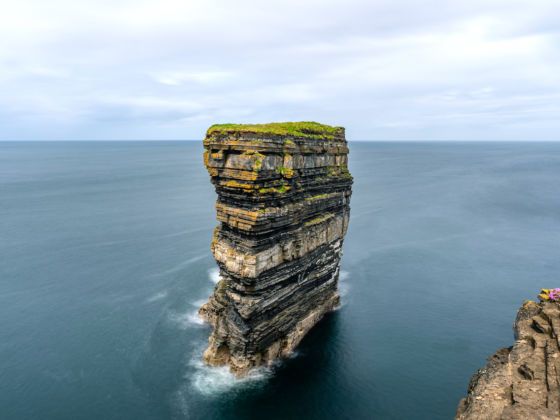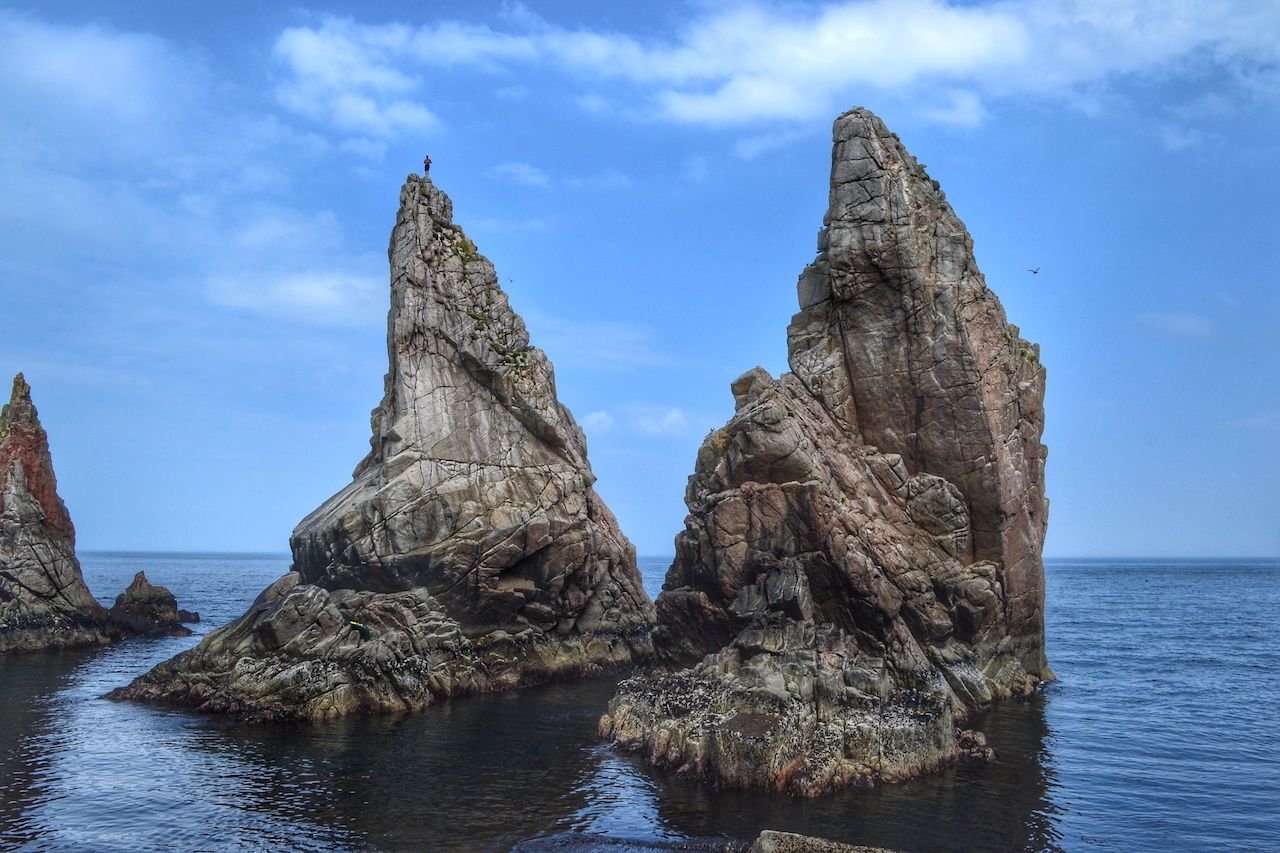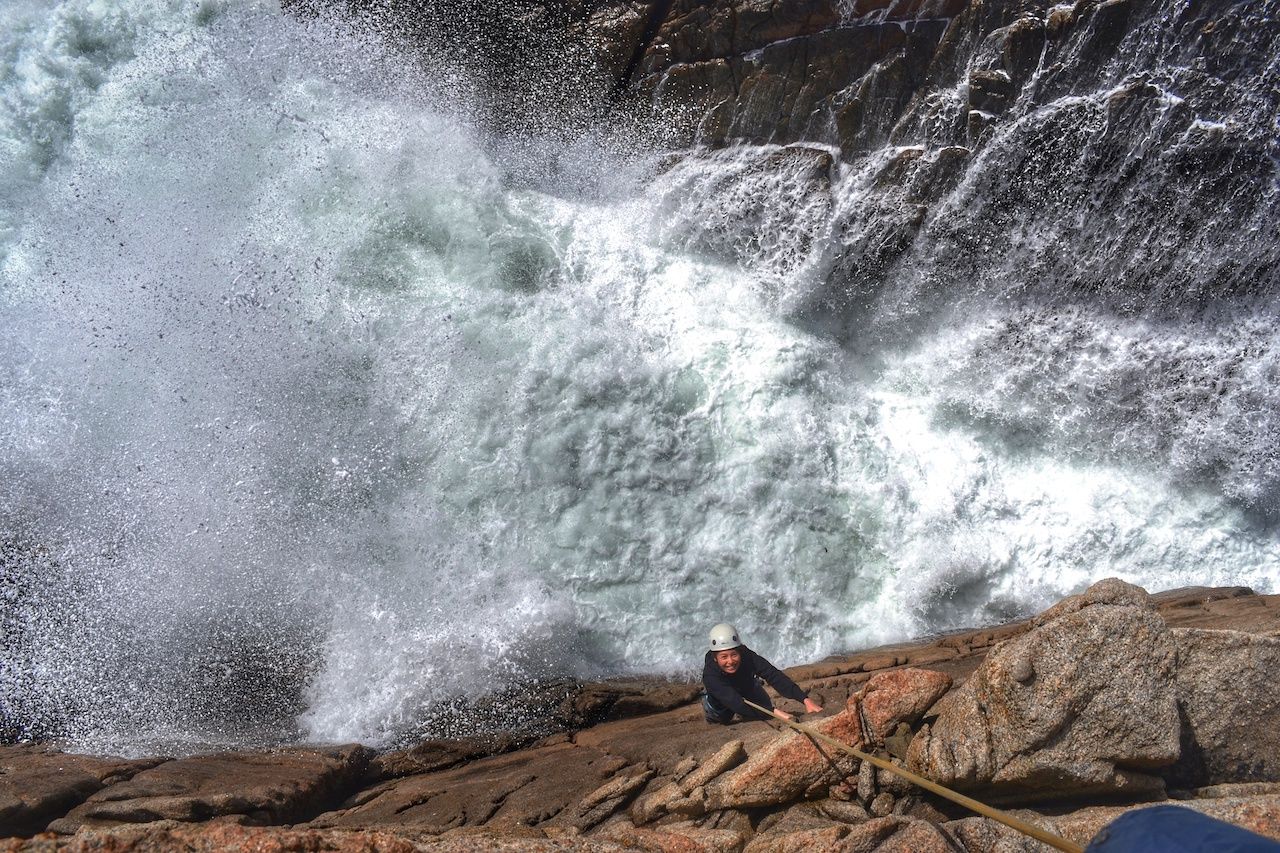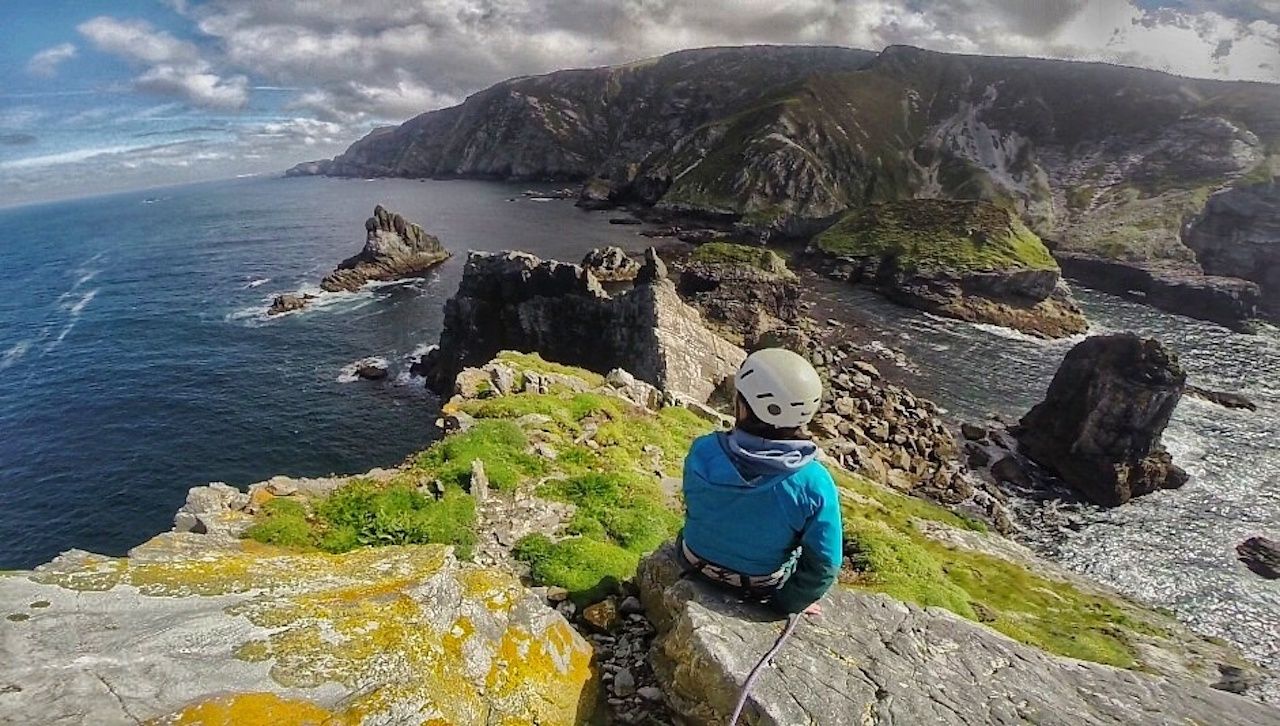“You’re aware that every move could be your last. But you know you’re going to be okay.”
That’s how Iain Miller describes the most difficult ascents he’s accomplished of the eerily beautiful sea stacks that grace Ireland’s treacherous Atlantic coast. Miller has climbed more than 100 sea stacks, over 60 of them on first ascents — making him the world’s most accomplished climber of the strange and mesmerizing rock formations.
Miller first started climbing in his native Orkney Islands, a rugged archipelago off the northern tip of Scotland, but for the last 25 years he’s made his home in Donegal, along the craggy, weather-beaten shores of northwest Ireland. As he tackled the world’s most dangerous sea stacks, Miller’s rising fame drew the interest of others, who reached out to him to get his help in bagging a sea stack of their own — and now Miller has his own business, Unique Ascent, sharing the secrets of this stunning, untamed corner of the world.






